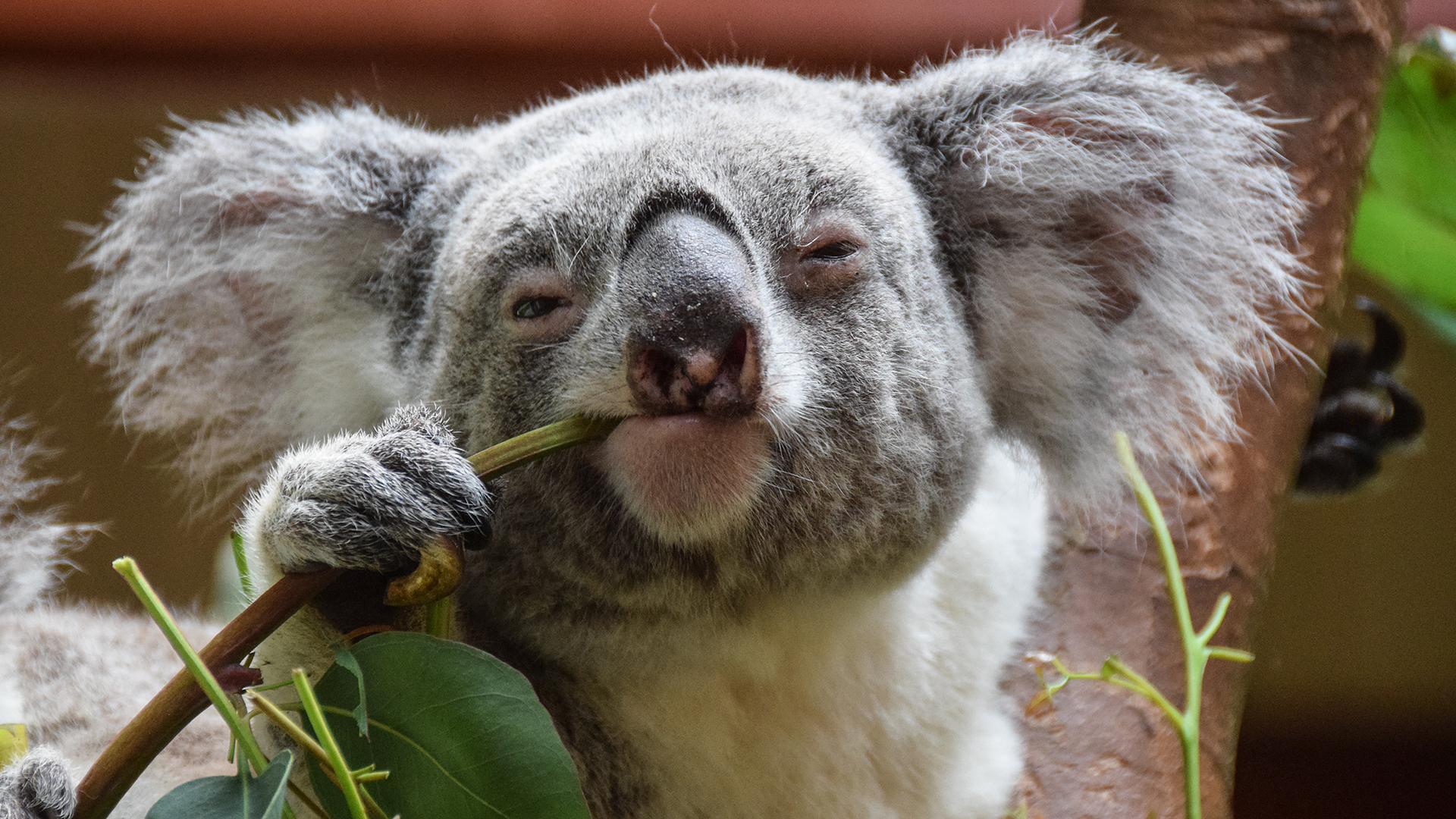For koalas with chlamydia, relief is finally in sight
Scientists identified an effective treatment with few side effects.

A serious bacterial infection called chlamydia is one of the leading causes of death for Australia's koalas. But new research has identified an antibiotic that can manage the infection with few side effects, offering a ray of hope for these adorable, endangered marsupials.
Chlamydia, a sexually transmitted disease (STD), affects humans as well as koalas; the bacterium Chlamydia trachomatis targets humans, while koalas are sickened by Chlamydia pecorum. Left untreated, chlamydia can cause infertility and permanent blindness in both species. Antibiotics that treat chlamydia in humans also work for koalas, but their success rate varies. And some types of antibiotics produce side effects that can be harmful to the iconic animals, such as disrupting the gut microbes that enable digestion of eucalyptus leaves, a dietary staple for koalas.
Recently, researchers conducted the first comparative analysis of the two antibiotics that are most commonly given to koalas with chlamydia: chloramphenicol and doxycycline. They found that not only was doxycycline a more reliable treatment for defeating infection, it also produced fewer side effects in the koalas, according to a statement.
Related: Marsupial gallery: A pouchful of cute
Koalas in the wild are exposed to chlamydia through sexual contact, and newborns can contract the infection from their mothers. It's unclear exactly why koalas are so vulnerable to this disease, but their susceptibility may be linked to a virus in the same family as the human immunodeficiency virus (HIV), Live Science previously reported.
Leading the new investigation was Elliot Grossman, a graduate student in the Cummings Veterinary School at Tufts University in Massachusetts. He collaborated with veterinarian Rosie Booth, director of Australia Zoo Wildlife Hospital in Beerwah, Australia; every year, the facility treats about 300 to 500 koalas, about 40% of which are infected with chlamydia, according to the statement.
"The wildlife hospital veterinarians had a pretty strong suspicion that chloramphenicol was causing more side effects and had potentially worse survival rates than doxycycline," Grossman said in the statement. "But there was no published research comparing the two treatments."
Get the world’s most fascinating discoveries delivered straight to your inbox.
Together with Adam South, a Cummings School research assistant professor, Grossman reviewed and analyzed 311 cases of koalas with chlamydia, noting how the animals responded to the drugs they were given. When koalas received chloramphenicol, they were more likely to experience "treatment failure" — when a first course of antibiotics fails to quell the infection.
These animals were also more prone to develop diarrhea, yeast infections, depression, dehydration and bone-marrow dysfunction, Grossman said in the statement. By comparison, koalas given doxycycline were more likely than the chloramphenicol group to have no harmful side effects.
The scientists are currently finalizing a manuscript describing their findings, a Tufts representative told Live Science in an email. However, the researchers' data is already making a difference for sick koalas.
"Hundreds of koalas throughout Australia have benefited from the research that has indicated that doxycycline is currently a better antibiotic to treat koalas with chlamydiosis than the previously widely used chloramphenicol," Booth said in the statement.
Chlamydia-afflicted koalas previously received a media boost in 2018 from TV comedian John Oliver, after the Australia Zoo Wildlife Hospital announced the dedication of the John Oliver Koala Chlamydia Ward. Oliver (and the koalas) might be pleased to know that thanks to this new discovery, more patients in the John Oliver ward can now look forward to a full recovery.
Editor's note: This article was updated on Sept. 3 to reflect that koalas and humans are infected by different species of chlamydia bacteria.
Originally published on Live Science.

Mindy Weisberger is a science journalist and author of "Rise of the Zombie Bugs: The Surprising Science of Parasitic Mind-Control" (Hopkins Press). She formerly edited for Scholastic and was a channel editor and senior writer for Live Science. She has reported on general science, covering climate change, paleontology, biology and space. Mindy studied film at Columbia University; prior to LS, she produced, wrote and directed media for the American Museum of Natural History in NYC. Her videos about dinosaurs, astrophysics, biodiversity and evolution appear in museums and science centers worldwide, earning awards such as the CINE Golden Eagle and the Communicator Award of Excellence. Her writing has also appeared in Scientific American, The Washington Post, How It Works Magazine and CNN.


